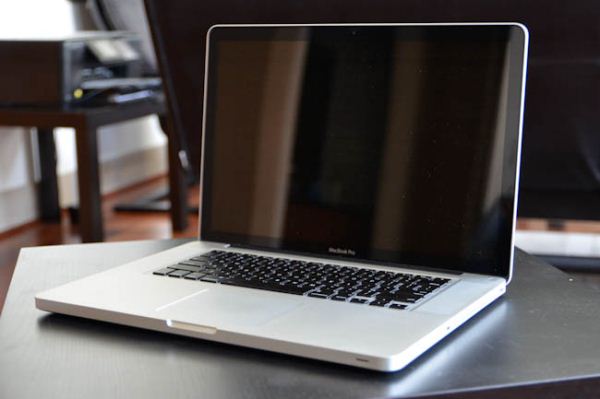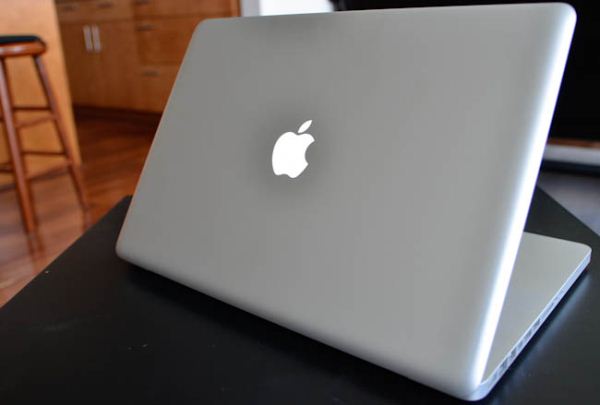The 2012 MacBook Pro Review
by Vivek Gowri on July 18, 2012 2:00 PM EST- Posted in
- Mac
- Apple
- MacBook Pro
- Laptops
- Notebooks
The 2012 MacBook Pro is a pretty intriguing product. It’s the latest and last in a line of standard-setting notebooks that helped shape the direction of the notebook industry over the last 5 years. This design has been around for a while, accompanied by the same general specsheet formula: the latest Intel processors, a performance-class GPU, a high quality display panel, and a $1799 starting price. These things haven’t changed since the original Intel MacBook Pros from 2006 (with the exception of the odd low-end 2009 MBP15, which started at $1599 and came with an Nvidia 9400M IGP).
The unibody MacBook Pro is one of the best engineered portables around, and the longevity of the design speaks to that. But at this point, it’s an aging design. Nearly four years in, the design has endured well, but it retains features that are starting to matter less and less - a DVD drive, Firewire, an IR window for the remote that hasn’t been included with new Macs in years. Possibly even Ethernet. I know some of our editors and readers rely on having an Ethernet connection, but I personally haven’t plugged an RJ45 jack into a notebook in years. Like, five or six years. You can see that Apple agrees - the Retina MacBook Pro has none of those things. The optical drive has been unceremoniously dumped, as has the IR port. The Firewire port and Ethernet jack have been traded for a second Thunderbolt port and an HDMI out (finally, HDMI comes to Macs - hooray for no longer needing those infernal adapters!). Based on my usage model, I make that trade twelve times out of ten. Two ports I never use for one I use regularly and one I will use going forward, and becomes worth more as more Thunderbolt accessories become available.
And when you think about it in those terms, you see where the normal 2012 MBP is flawed - it’s a design that’s rooted in the past, a four year old design with a one year stay of execution. That normally wouldn’t be a problem, but with the future being sold alongside it, it becomes a much more difficult sell. Especially when you consider this: if you were to buy the base 15” MBP and upgrade to a 256GB Samsung 830 SSD and 8GB memory (bringing it to spec-parity with the base rMBP), you’d be approximately $100 shy of the rMBP pricing. That’s $100 for a smaller, lighter notebook that’s just as fast and has a *significantly* better display. If you’re eligible for student discount, that difference is actually zero, because the rMBP has a greater student discount than the base MBP15. The rMBP is pretty pricey, but when you think about it, it’s a pretty good deal.
There are only a few legitimate reasons I can think of to skip the rMBP and get the MBP15, with the most reasonable of them being that you’re very fundamentally opposed to the soldered memory and custom SSD form factor. Another is if you’re highly dependent on a DVD drive and Ethernet and don’t want to pay for or carry around an external SuperDrive or GigE adapter. Or, you have a hard-set $1800 budget and simply don’t care about an SSD, extra memory, or having a good screen (or plan to upgrade them later).
But here’s my take – the 2012 MBP is a great notebook and a very solid portable system. I just don’t want one. For my money, I’ll either save some and get a discounted 2011 MBP15 or spend a bit more to step up to the Retina. And maybe this is telling, but as soon as I was done with the benchmarking and the major part of the writing for this review, I stopped using the MBP and picked up a base Retina. It’s the future, simple as that.












132 Comments
View All Comments
dwade123 - Thursday, July 19, 2012 - link
Apple needs to redesign the 13" Pro. Get rid of optical drive, put in Quadcore, Retina, and at least a GT 640m.Airkol - Thursday, July 19, 2012 - link
I've got the Retina but but I want to make this thing rock. I need a fast 512GB drive. This samsung drive is a slug.
I see OWC just announced their upgrade for the MBA 2012. Any word on them having an upgrade fro the Retina?
EnerJi - Thursday, July 19, 2012 - link
I was under the impression that Apple was now shipping pretty fast SSDs? So fast that most users (in most use cases) wouldn't be able to tell the difference between their SSD and a top-of-the-line model.Airkol - Friday, July 20, 2012 - link
One of the drives used in the MBA is a Toshiba that uses the SandForce controller. That is pretty fast. The Retina uses Samsung based drives and they aren't as fast.I went with the base model Retina and the 256GB drive. I'm betting that OWC will have a 480GB drive and an external case for the drive I pull out for less than the difference between the next model up with a 512Gb drive.
Death666Angel - Friday, July 20, 2012 - link
http://www.anandtech.com/show/6005/apples-new-ssd-...Depending on what you do with it, it's pretty fast. :D
Paapaa125 - Saturday, July 21, 2012 - link
Actually Samsung is the faster of the two AFAIK. It is essentially Samsung 830 SSD drive which is one of the fastest SSDs out there and very reliable. Still the best choice for almost all desktop users. You should feel lucky you got Samsung instead of Toshiba.dsumanik - Thursday, July 19, 2012 - link
C'mon Vivek, ethernet no longer relevant?I concede that using a thunderbolt port for an adapter is an appropriate substitute, i mean what does it matter if you are plugging in a cable with a dongle on the end, vs a plain old rj45 connector.
But until wireless networking catches up with ethernet in the latency and STABILITY department, it will always be necessary.
Wireless technology developments seems to keep pushing bandwidth...i want consistent 1ms ping throughput and a 500 meter range without bandwidth/connection loss.
actually screw that, i want one nanosecond throughput...latency is the biggest holdup for all of us now, just like going from a mechanical HDD to a SSD drive, the difference on a wired vs wireless network is immediately noticeable....especially through apps like VNC or remote desktop.
Imagine if the entire north american internet infrastructure went wireless...lol. It would take 5 seconds just to ping this page and 30 seconds to load....after the third try.
Eventually, wireless has the potential and will likely replace wired networks...but today is not that day, id say at least 10 years.
EnerJi - Thursday, July 19, 2012 - link
Everyone's needs are different. Is a wired connection objectively "better?" Yes. Is wireless considered "good enough" for the vast majority of people? Absolutely yes.I've used Ethernet *maybe* three or four times in the past three years for troubleshooting purposes. Will I miss it if I were to get an rMBP? Hard to say for sure, but I'm leaning towards probably not.
The0ne - Thursday, July 19, 2012 - link
I haven't even touch my ethernet port at all. I've traveled quite often overseas as well and still don't even have a need. That is because wi-fi is so abundant and easy to set up that ethernet is just not useful as it once was. Sure it can have it uses when troubleshooting, the only thing I can see myself using it for, but other than that wi-fi serves the 99% fine.zephxiii - Friday, July 20, 2012 - link
I definitely need this for large transfers to and from the server. Sure u can use an adapter...but i hate having to fumble with and carry around adapters.An optical drive is nice for when u *need* to burn something, or access a disc. Granted i rarely use mine but i like being able to burn something when needed without being inconvenienced.
Seems like this *tool* has become less of a tool :(